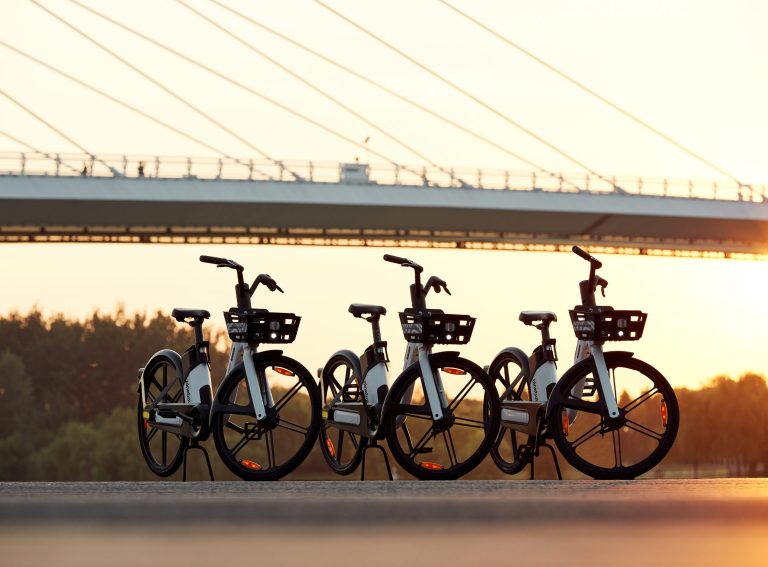Author: John Kock, Managing partner at Springtime Design
Let’s start with the positive. Shared micromobility has stimulated the use of healthy and clean personal mobility over car use and public transportation. Cities that were typically car-focused and not bike-friendly (Paris, Bruxelles, Milan, San Francisco) have undergone an unprecedented transformation towards bike friendliness. A big win for the planet. In the space of just a few years, the shared micromobility providers have managed to create a serious industry around sustainable individual mobility – a great accomplishment.
However, most shared micromobility providers have always heavily relied on funding. This is a very capital intensive business – excessively used hardware fleets, 24/7 operations for rebalancing, charging and servicing, heavy competition, and a new territory where everyone wants to take the market and be the winner. So obviously, more focus on expansion than on profitability. Until the eternal source of funding capital seemed to dry up last year, forcing the providers to take a step back and focus on profitability instead. A good time for some reflection and new horizons…
So what is next for shared micromobility? To become a sustainable and mature business, the road to profitability is key. But on a higher level, shared micromobility needs to grow up.
Diversify the hardware
Most scooters and e-bikes in sharing programmes come from a few big factories in China. Sure, they are tailored to the individual provider’s needs, but essentially the same vehicles are riding all across the globe, with different colours and logos. In my opinion, sharing e-bikes are clunky and heavy, and while e-scooters are easy and fun to use, their wheels are in general too small for a comfortable and safe ride, and their form factor just isn’t ideal to put out on our streets (they tip over). And what about carrying stuff? Or a friend? What about the older demographic? I think we can do better. There is a big opportunity for more diverse hardware.
Mind the non-user
Not everybody is using shared micromobility. In fact, a lot of us aren’t. Enormous fleets of often worn-down (‘don’t be gentle, it’s a rental’), brightly coloured and loudly branded vehicles have an enormous impact on how our cities look and feel, especially to the people who are not benefitting from the service. You could argue that micromobility operators privatise public space by claiming parts of it. They gain control over and earn money from something that is supposed to be public property. I feel there is a great opportunity in minding the non-users of micromobility. Besides creating less visual clutter in the city, providers could offer functionality that is also useful for non-users, like adding a bench to a row of docks.
This will take away negative associations and open up new opportunities for the industry. And we might even convert some non-users to users!
Support city transformation
In December 2022, five leading operators of shared e-scooters and e-bikes published their recommendations for cities to better integrate shared micromobility vehicles onto their streets – a rare move in a very competitive industry. These 10 commandments are a great initiative, but they basically focus on how to make their business most successful/profitable, rather than how to create the best situation for a city and its people. I would like to encourage the same operators to also think with the cities about more complex topics like universal docking and charging infrastructure, and even about how the various vehicles best live and co-exist on the streets. Providers have enormous amounts of data on user behaviour, which can surely help cities make better plans. Cities on the other hand should be realistic in their demands when allowing operators into their cities. If they truly believe shared mobility adds to the public interest, they could support the operators by lowering their permit fees. Public service comes at a cost.
Convergence
Although commercial, shared micromobility such as trains, trams, subways, taxis and buses, are in the end a public service. With multimodal travelling becoming the norm in cities, users are looking for the best options for their situation at that specific moment. Brand loyalty goes a long way, but in a rainy morning commute you simply want the best available option. We all have 10+ apps on our phones to use the various urban transportation services. We desperately need convergence. There are initiatives of course: Google is showing some providers in some cities, apps like Jelbi and Umob are offering integrated access to MaaS, but also on a per city or per country basis. The best commute is the one that doesn’t leave you waiting. Convergence over individual service push is the way to go, and will also lead to better brand recognition for individual providers.
Shared micromobility is an awesome tool in our ambition for sustainable and livable cities. In its short existence, it has already accomplished so much. If we, as an industry, and its supporting consultants and cities, can take the right steps towards a mature service and industry, we can get rid of many more cars and – as one of our clients brilliant brand slogan’s states – change mobility for good. As sustainable urban mobility designers, we are committed and eager to do our part!











